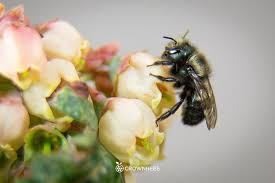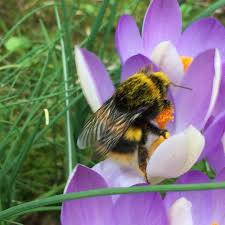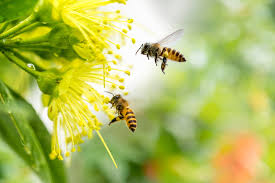As winter approaches and the solstice nears, I find myself thinking about the wellbeing of the garden’s bees. In particular, I am considering expanding into a neglected plot that has remained fallow for over a decade. Although we occasionally mow the weeds and trim the woody growth, this area has become an ideal habitat for native bees, who prefer undisturbed ground for nesting. While honeybees are crucial for pollination, other species, like orchard mason bees and bumblebees, are equally vital, often doing half the pollination work in most gardens. It would be a shame to leave them without a proper home.
First, a confession: I simply enjoy bees. From the small, iridescent mason bees that visit blueberry blossoms in early spring to the large bumblebees that pollinate summer tomatoes, bees add a fascinating dynamic to the garden. While we don’t maintain honeybee hives ourselves, by the time our apple trees are in bloom, honeybees often forage in our garden as well. Honeybees thrive on a varied diet of nectar and pollen, and those foraging in organic gardens are less exposed to pesticides linked to Colony Collapse Disorder.
Often, I find myself pausing in the garden to watch bees at work. One of the most bee-friendly plants in my garden is catnip, a hardy perennial that attracts bees with its long bloom time. During certain hours, it may be swarming with bumblebees, but honeybees are also frequent visitors. This plant is a reliable source of nectar, allowing bees to conserve energy while searching for food.

Bees require both nectar and pollen for nourishment. While nectar provides the carbohydrates, pollen is their primary source of protein. Many native bees gather pollen to feed their young, and mason bees even line their egg cavities with it. In late spring, when the spring flowers have faded but summer blooms have not yet appeared, bees face a shortage of fresh pollen. This is where plants like breadseed poppies come in, filling a crucial gap and offering a beacon for pollen-seeking bees.
Two other plants that attract a diverse range of bees are sedum and garlic chives. These two plants, often grown near each other, are a magnet for garden bees in late summer. On any given day, I have observed more than five different kinds of bees visiting these flowers.

One reason my garden is so rich in bees is because I rarely use pesticides, and when I do, I choose organic options. Additionally, I ensure there is always water available for the bees, especially during dry spells. I plant a variety of bee-friendly plants, like borage and scarlet runner beans for bumblebees, as well as buckwheat for honeybees. Sunflowers, with their abundant pollen, are also a favorite of many bee species.
Native bees, many of which are solitary, nest in small holes in the ground or in decaying wood. Bumblebee colonies may consist of a dozen or more bees in summer, but by the end of the season, only the queen survives, burrowed deep in the soil to overwinter. Mason bee larvae hibernate in hollow plant stems. Bees that nest near the ground prefer sunny spots with good drainage, similar to the conditions plants need to thrive. This presents a challenge, as I want to provide both a sanctuary for the bees and a flourishing garden.
So, after careful consideration, I’ve decided that the bees should take priority. Habitat loss is a greater threat to bees than food scarcity, and it doesn’t make sense to attract them to my garden without providing suitable nesting spots. Instead of simply letting the land remain fallow, I’ll transform it into a native bee sanctuary, planting bee-friendly flowers in the spring to ensure they have the food and shelter they need. This is my way of giving back to these hardworking pollinators.
